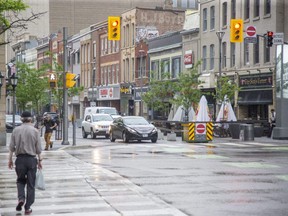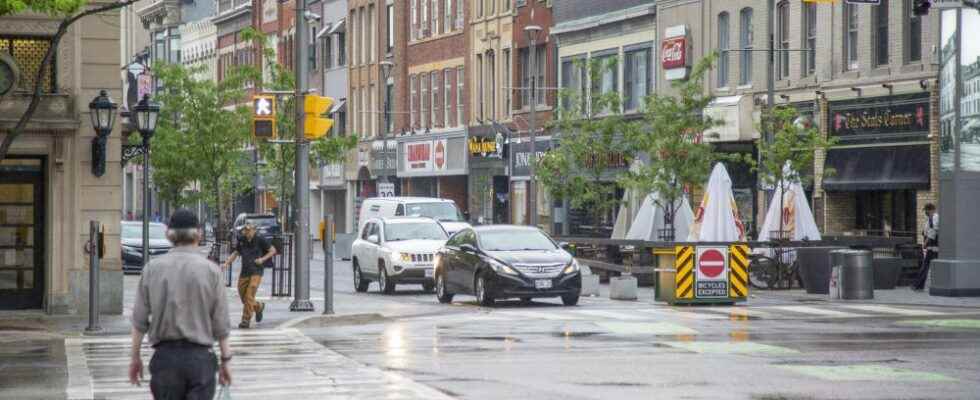If you’ve ever grumbled about not having enough time to cross a busy London street before the light changes, you’re going to like this.

If you’ve ever grumbled about not having enough time to cross a busy London street before the light changes, you’re going to like this.
The city is piloting a new traffic-signal system that will give pedestrians a five-second headstart before the light turns green for vehicles.
Called a leading pedestrian interval, the system that employs an “advance” walk has reduced car-pedestrian collisions in other cities such as Toronto and Sudbury. In London, the system will be piloted at Dundas and Wellington streets.
With the added time, crossers will now have “in the ballpark” of 28 seconds to cross that intersection’s four lanes, a city engineer says.
“So when you go down to the intersection and observe this, you’ll see a lot of pedestrians being able to get at least a lane or so out of traffic prior to the green light coming on,” said Jon Kostyniuk, a traffic and transportation engineer whose department runs and maintains the city’s signal system.
Dundas and Wellington, which has bus stops on three corners and the outer edge of Dundas Place on another, was chosen for the pilot because it’s a “big, people-centric” crossing, Kostyniuk said.
“There’s a lot of transit access there, and also a higher pedestrian volume. So in terms of just a first location for this type of implementation, it seemed like a good spot to test it out and monitor it,” he said.
The city says the leading pedestrian interval will make walking Londoners more visible to drivers, give people with disabilities extra time to cross, and reinforce that pedestrians have the right of way over vehicles that are turning. And yes, it does mean motorists will have to wait at the red light for an extra five seconds.
“We’ll observe, we’ll learn and then we’ll see how we want to apply this in other places in the city,” Kostyniuk said.
But it’s unlikely all of the Forest City’s 413 traffic lights would be equipped in the same way. The system would probably be rolled out on a case-by-case basis once city staff examines the data they’ve collected.
